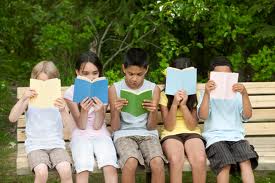
Spelling Help
I know many adults who truly believe that they cannot spell, saying “I can’t spell” in the same manner that they would say, “I can’t swim.” But spelling, like swimming, can be taught. However, while most teachers know how to test for spelling, very few know how to teach spelling.
There is a misconception that spelling is a form of dyslexia, a disorder where one is unable to recognize words or sound them out phonetically. The acts of reading and writing occur mainly in the left temporal lobe of your brain – the part of the brain near your left ear. The act of spelling, however, occurs mainly in the occipital lobe of your brain – the visual cortex in the back of your head responsible for forming and retrieving visual memories. So, to remember how to spell a word, you must first store the memory of that word, and then retrieve that “picture” when you are about to write it.
The Three Types of Memory
When I teach spelling to children and to adults, I first talk about the three types of memory. The first type of memory can be called “Blackboard” memory, which lasts from 1-30 seconds. The goal of your brain in Blackboard memory, surprisingly, is to forget what you’ve seen. For example, if you’re driving down the street and see various business signs, “Tom’s Bakery,” “Joe’s Key Shop”, “Chan’s Dry Cleaners,” etc., you certainly don’t want to keep remembering Joe’s Key Shop for the rest of the day. Rather, a “slide” of Joe’s Key Shop is stored in your visual memory, but you’ve made no pathway to consciously retrieve the memory. Occasionally there may be an accompanying smell (such as the bakery next to the key shop) which may remind you of the key shop, but you’ll most likely not remember that the key shop exists. So, when you actually need a key made, you’ll probably have to search the listings for one, and lo and behold, there’s Joe and his key shop right around the corner!
The second type of memory can be called Short-Term Memory, which lasts from 31 seconds to about 2-3 months. Most children rely on Short-Term Memory to recall information for tests, midterms, and final exams, but then forget the information the following year (which explains why kids have to be re-taught “mean, median, and mode” every year from elementary to high school). The third type of memory, Long-Term Memory, is the stored memories of experiences and information that we will always be able to recall, either from connection to an emotional event (e.g., World Trade Center) or from multiple uses (e.g., names, phone numbers, addresses, etc.).
The goal of all learning, then, is to place what needs to be remembered into the student’s Short-Term Memory, so that facts, dates, and the spelling of words can be recalled. Once this information is stored in Short-Term Memory, a pathway is established so that the student is able to consciously retrieve the information for up to 3 months. If there is repeated exposure to the information, this pathway becomes even more established, forming a Long-Term Memory.
Simple Technique for Perfect Spelling
Teaching spelling in school is usually done by having a student copy the words over and over again, which of course does not work at all. By copying the words, their spelling never leaves the student’s Blackboard Memory, so the brain does its job well and dutifully helps the student forget the spelling. The goal, then, is to place the spelling of the word in the student’s Short-Term Memory, so it’s “picture” can be retrieved.
Here is a simple technique that you can do at home to help your child succeed in spelling:
1. Have your child write the spelling word on a piece of paper, then trace the letters with his or her index finger while saying the spelling word out loud. Have the child say the word normally while tracing it, not say or sound out individual letters or vowels.
2. Take the paper away and wait a minimum of 30 seconds (e.g., sing the “Jeopardy!” theme or some other song).
3. Give your child a blank paper, saying, “Now, write the word you traced.”
4. If your child spells the word incorrectly – which is likely to occur at the beginning of this technique – go back and repeat steps 1-3.
Once your child has established a pathway to the Short-Term Memory of a word’s spelling, it’s THERE – the brain has no way of knowing if that pathway was established 31 seconds ago, one week ago, or one month ago. And since the pathway is there, your child WILL remember the spelling of the word.
I’ve used this technique with parents and children for many years, even students with mild traumatic brain injury, and I’ve never come across a student who did not suddenly go from the worst speller to the best speller in the class.
Good luck!………………..Dr. David.
Learn more about the New PRIDE Reading Program
_____________________________________________________________________________
David Raffle, PhD, CBIS, is a credentialed special education teacher, educational specialist, and brain injury specialist who performs neuropsychological and psychoeducational testing for special education services, standardized testing accommodations, and modifications in the workplace for children, adolescents, and adults with developmental disabilities, traumatic and acquired brain injuries, attention-deficit/hyperactivity disorder, and autism spectrum disorders.
Visit Dr. Raffle’s website at: https://www.DavidRafflePhD.com or email him at: davidrafflephd@gmail.com

